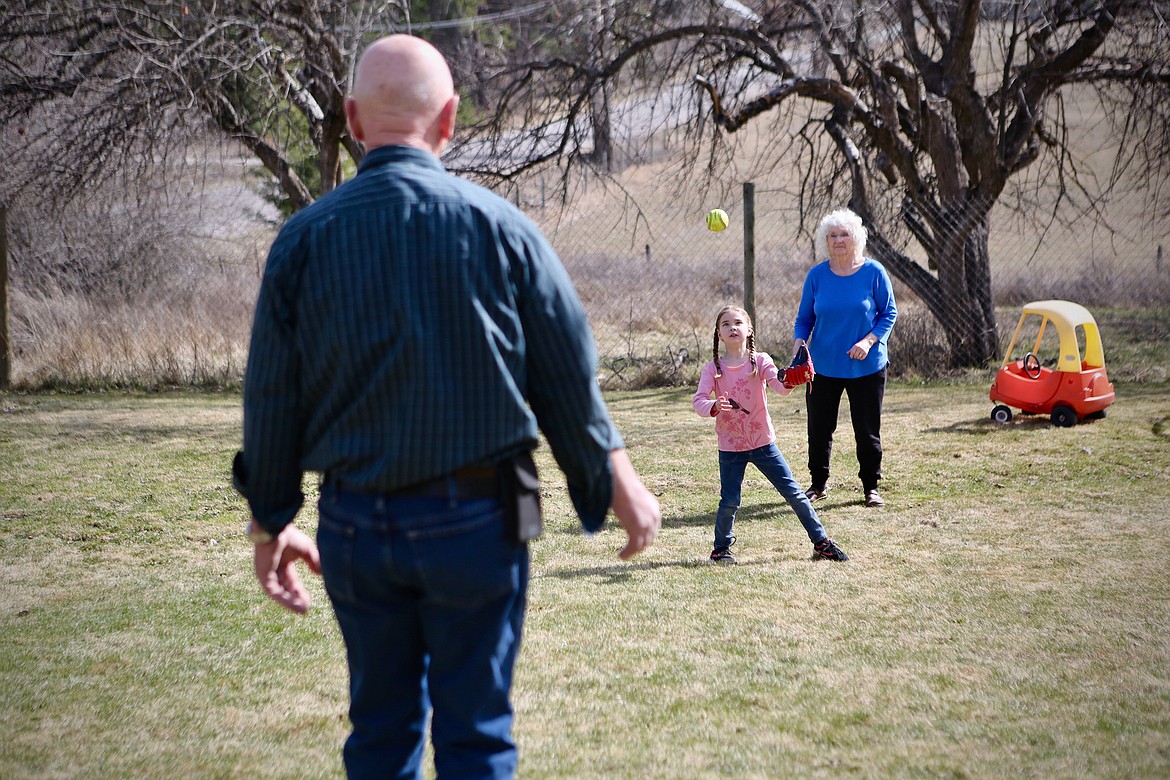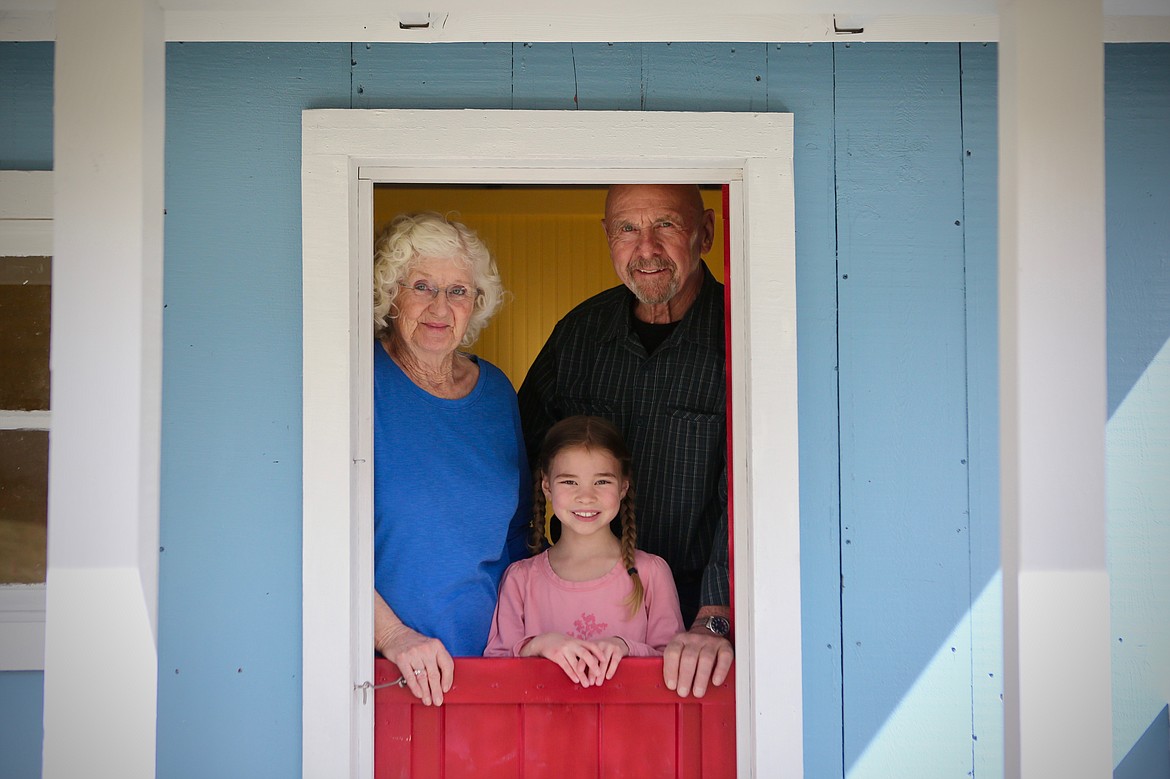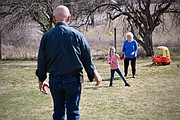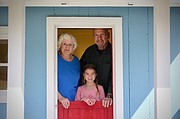Open hearts and open homes
Jim and Mavis Meyer have been foster parents for more than 46 years.
After their four biological children grew up and left the home, empty nest syndrome hit hard. That’s when Mavis began looking into becoming a foster parent — a temporary caregiver for children who have been removed from their homes for various reasons — some have lost their biological parents to tragic accidents, while others come from heartbreaking pasts of abuse or neglect.
After fostering their first child, the Meyer’s home never seemed right without one again.
“Our first adopted daughter had been so badly abused that our social worker actually cried when he was telling me about her,” Mavis recalled. “She had been burned with cigarettes on all of her knuckles and behind her neck, had her eardrums punctured. I could go on and on.”
The child was just three years old.
In the nearly five decades since welcoming that first child into their home and their hearts, the Ferndale couple has hosted more than 100 children, four of whom they have adopted. They are set to adopt a fifth child -- 7-year-old Annabella -- this year.
So what motivates the Meyer family, now in their early 80s, to continue fostering children in the Flathead Valley?
“I see the huge need out there. There’s so many kids and so few foster families. There just isn't enough. We just decided we’d do it as long as we can,” Mavis said. “People say, ‘Somebody should do something.’ Well, yeah! Jim and I are old. If we can do it, so can they.”
Nearly 3,700 children are in foster care in the state of Montana, the second-highest number per capita in the United States, according to Youth Dynamics.
The need for therapeutic foster families is especially high. Therapeutic foster care differs from traditional fostering in that parents participate in specialized annual training to prepare them to care for children who have been diagnosed with behavioral or emotional needs that require therapeutic services.
“There are 67 children on the waitlist for [therapeutic] foster care — we’ve never had a waitlist,” said Sandy Cutchin, Family Development Coordinator with Youth Dynamics, an organization that provides mental health services for Montana children, operates several group homes throughout the state and provides training for therapeutic foster parents, like the Meyers.
And those who sign up to be therapeutic foster parents don’t go it alone.
In addition to training, Youth Dynamics provides them with a case manager, youth case worker, therapist, family support assistant, while the state of Montana also assigns that child a case worker and a guardian. Families are also entitled to 48 hours of no-cost respite each month and can call Youth Dynamics for guidance.
“That support is totally wrap-around -- our foster parents are not in isolation,” Cutchin said. “They’ve got a whole team that is surrounding them.”
THE NEED for more families to step up is especially critical due to the COVID-19 pandemic, which has exacerbated stress within family units, making instances of abuse more likely while at the same time, preventing would-be foster families from getting involved due to concerns about the virus and their own increasing stress levels and financial uncertainty.
“The amount of substance abuse is higher, neglect is higher, abuse is higher,” Cutchin explained. “Families are in pretty dire straits.”
The foster care system is experiencing a significant backlog, specifically when it comes to therapeutic foster families, which are trained to provide a high level of care for children with past trauma.
“It’s a step-down process and the kids have nowhere to go because we don't have the foster homes for them to go into,” Cutchin said. “We have a bottleneck coming from all sides.”
Children who exhibit more severe behavioral symptoms might start by being placed in a therapeutic group home where they receive 24/7 care in a structured environment. When they’re ready to advance to a less structured place, they would ordinarily be moved into a therapeutic foster home, but right now those are all full.
It’s a holding pattern on both sides of the equation -- kids who are initially placed in less-structured settings but could benefit from more advanced care can’t move up either. The result is that some foster kids who need services, like therapy, aren’t getting them and those who are ready to move into the next phase of less intensive care, can’t do so either.
“With regular foster homes, these kids have not been getting their therapeutic services, they haven't been in the school so their counselors haven't been able to help them,” Cutchin said. “In just the Flathead Valley, we currently help 99 children. Of those 99, in the last six months at least 42 have had Child and Family Services involved.”
She’s received about a dozen inquiries from prospective parents, but none of them have “taken the plunge.”
“We currently have only seven [therapeutic] foster homes,” she said. “We want 15 to 20 by the end of this year.”
Becoming a foster parent isn’t without its challenges, but the rewards are great, according to Mavis Meyer.
“I started out thinking that you could fix everybody, all these little kids that were damaged and hurt by their caregivers. And found out real quick, you can't fix them all,” Mavis acknowledged. But she and her husband have been able to change many lives for the better.
Among their foster children was a 4-month-old baby who came to them after being severely beaten, suffering a blunt force trauma that nearly severed her intestines.
“They life-flighted her to Missoula and they didn’t expect her to survive, but she did,” Mavis said.
When the Meyers first brought her home, that little girl refused to make eye contact with Mavis and became stiff as a board while she was held.
“It didn't take that long for them to warm up to us,” Mavis said. “All three of them would sit on Jim’s lap.”
After two years in the Meyers’ care, she and her sister grew into sweet and loving children.
“Two or three years ago, we got a high school graduation announcement and a letter from them thanking us,” Jim said. “We hadn’t seen or heard from them in all these years.”
Later on, the couple took in three siblings after one of them had been strangled by their mother. They were at times unruly, but in the evenings, one of the sisters turned to Mavis for comfort.
“Every night she’d say, ‘Keep me safe,’” Mavis remembered. “We would tell her, ‘Papa’s big and strong and we won’t let anybody hurt us.’ Every night. Every. Night.”
Goodbyes can be difficult, Mavis added. She has cried “buckets of tears,” but stays motivated to continue fostering, knowing that there are many other children waiting in the wings.
“I’ve heard so many times, ‘Oh I could never do that … or I could never give them up after having them,’” she said. “Well, it isn’t easy always, but you know what? There’s such a need. Give it a shot. Try it.”
“People think of maybe the inconvenience,” Jim added, “well, think of the kids who are out there.”
KALISPELL’S NICCI Nash turned to foster parenting to help make her dream of motherhood a reality. After fostering her first child for about nine months she got a call about a boy named Malachi who needed a home.
They started out writing letters and even got to visit before he moved in. A couple of weeks later, his older brother Tim joined them and eventually Nash adopted the pair.
“God just put everything together. There was not even a question that they were meant to be my boys,” Nash said. “When the judge signed the paperwork it was like these are my boys. They're my sons. I don't think there’s anything that could ever compare to that. My dream came true.”
As a therapeutic parent, Nash said it’s important to meet the children where they’re at and to know that one parenting tactic that works well for one child, may not resonate with another. The rewards for her come in witnessing the positive changes she’s seen in her sons.
“It takes time, it doesn't happen overnight, and there’s still things that we’re learning about each other, but watching the growth and the emotional stability … it’s amazing when that happens,” she said.
Tim Nash Young, 16, described the foster system as “scary at first,” due to the unknowns presented by each family situation. After leaving his birth parents at four or five years old, he spent time in more than a dozen foster homes. He carried a few possessions with him from home to home — namely a particular sweater and a frog stuffed animal.
“It was kind of scary and kind of hard because then you have to say goodbye,” Young said of the frequent moves.
Now that he’s been adopted, his life has improved and become stable.
“The best part? There’s a lot of things. I got a dog. I know that I’m not going to have to move to another family,” he said. “My grades went up. I didn't really care about school whatsoever [before].”
It’s these victories that make therapeutic foster parenting all the more worthwhile.
“Just don't give up,” Nash said. “It’s worth it. These kids are worth it.”
To become a therapeutic foster parent through Youth Dynamics, there are a few basic requirements that prospective parents must meet, including being at least 21 years of age, having a stable income and a residence that includes a dedicated room for the foster child. Therapeutic foster parents undergo a licensing process through the state of Montana, plus additional training hours through Youth Dynamics.
“To me [foster parents] are incredible heroes. Not only do they give their home, their time, their effort, their love — they give their whole selves,” Cutchin said. “We don’t just want you, we need you. You are really going to make an impact. You may be giving that child that one memory, that one ounce of hope that they will hold onto for the rest of their lives.”
For more information on becoming a therapeutic foster parent, mentors or contributing to the work done by Youth Dynamics, call Sandy Cutchin at 300-7012 or email cutchins@youthdynamics.org. Visit the organization online at www.youthdynamics.org.
Reporter Mackenzie Reiss may be reached at mreiss@dailyinterlake.com or 758-4433.










